












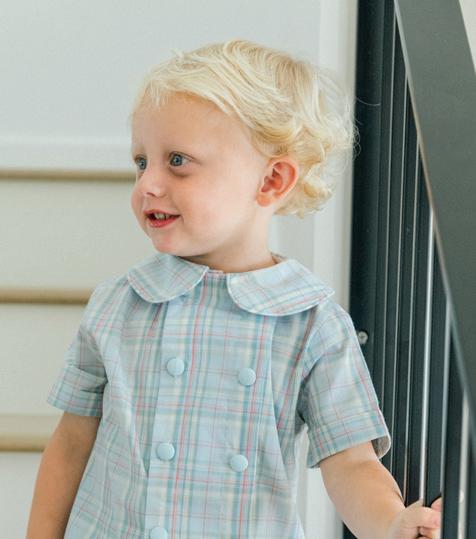

MONDAY, OCTOBER 3, 5:30-6:45pm
MONDAY, OCTOBER 3, 5:30-6:45pm MONDAY, OCTOBER 10, 5:30-6:45pm
Beginner yoga classes, taught by Devon Gage, will be held in the Aldridge Gardens pavilion on Mondays from 5:30-6:45pm. Get a whiff of fresh air as you breathe! Please let Devon know if you are going to be there (205447-5577). The pavilion restrooms will be open.

TUESDAY, OCTOBER 18, 5-7pm
An artist reception for Mary Lynne Robbins. Meet the artist and sip refreshments while viewing her incredibly colorful and creative art pieces inside the gallery. She describes her art as “reflecting the many interests in my life, especially music and dance.” A select list of Mary Lynne’s work will be available for purchase. Please RSVP at aldridgegardens.com.


(205) 682-8019 | aldridgegardens.com 3530 Lorna Road, Hoover


I am so happy to finally start thinking about all the fall things—from pumpkin patch field trips to Halloween costumes and all the seasonal treats. October is the best time to savor the surroundings—crisp air, changing leaves—and appreciate all the Magic City has to offer.

I’m excited to feature Helena native and Auburn University senior Mac Shannon on page 20. This summer, he traveled with a group of students to Guatemala as part of Engineers Without Borders to help bring clean drinking water to villages there.
It’s also time to get outside and enjoy the weather and seasonal favorite—s’mores!—with family and friends. Flip to page 24 to get the details on a supersimple firepit DIY. Get the whole crew to help, and then enjoy the fruits of your labor with a twist on classic s’mores. Find some fun recipes on page 28. We also have an events roundup on page 29 of fall festivals and pumpkin patches you won’t want to
miss!
If you’re hoping to get the kids’ craft supplies organized before the chaos of the holidays, then we have just the article for you. On page 12, House Peace’s Tara Bremer has ideas to help you corral the crafts once and for all. Finally, make sure you check out our essays from Sean of the South (page 16), Holy Moly Motherhood (page 10), and Just for Dads (page 8), plus much more this month!

Be sure to visit our website and Facebook page for other happenings as well. Birmingham offers endless stories to tell, so if you know of a person, event, or business we should feature, we’d love to hear from you!



Bham Family is published monthly by JBMC Media, LLC, P.O. Box 26432, Birmingham AL 35260. 10,000 copies are printed and distributed at more than 650 locations throughout Jefferson and Shelby Counties.
If your business would like to make copies available to customers, please email matthew@jbmcmedia.com with your business name, address, point of contact, and number of copies you would like.
To reach the largest audience of parents in Birmingham each month, partner with us. Email matthew@jbmcmedia.com to get started with a partnership that will be a key part of your plan.
These folks are the ones to thank for our magazine’s success — spend your money with them, and tell them you saw them in Bham Family!
Alabama Designer Craftsmen 6

Aldridge Gardens 3
Amazing Grace Farms 11
Applause Dancewear 2
Brookwood Baptist Health 9
Children’s of Alabama 31 Compact 32
Cottontails Village 17
Deo Gloria Wood Works 26
Eyes on Chelsea Vision Care 4
Hay Hoover 18
Hoover Met Complex 19
Kasey Davis Dentistry 2 Painted Personalities 27 Pediatric Smiles 26
Sike’s Children’s Shoes / Jack n Jill 3 Urgent Care for Children 5
Vineyard Family Services 25 Vulcan Termite & Pest Control 27 Wrapsody 25
14
Ward Williams gives advice p.8
Holy Moly Motherhood Peanuts p.10
Organization Corral crafts & hobby supplies p. 12
Sean of the South Talladega p.16
Food S’mores & fall festivals p.28
Kids Who Shine Student studies Arabic in Jordan p.30
The 49th Annual Birmingham Greek Food Festival p.14

Auburn students bring clean water to villages in Guatemala p.20
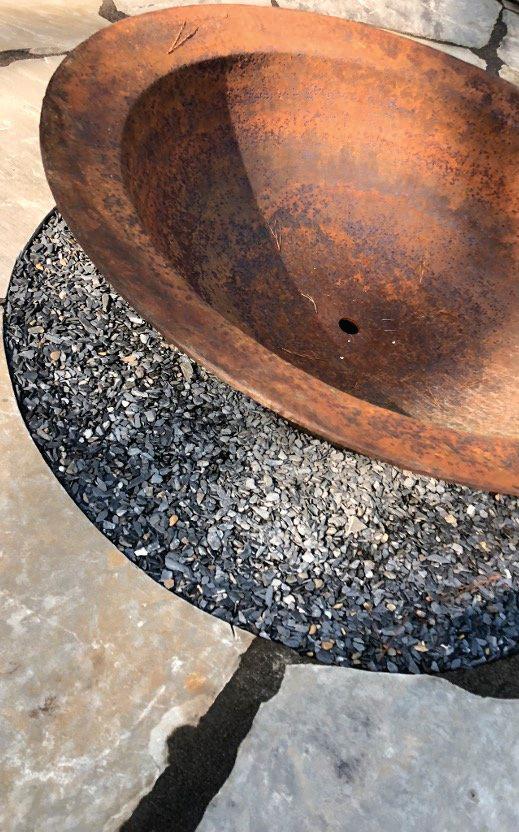
This weekend project will have you ready to roast marshmallows in no time! p.24
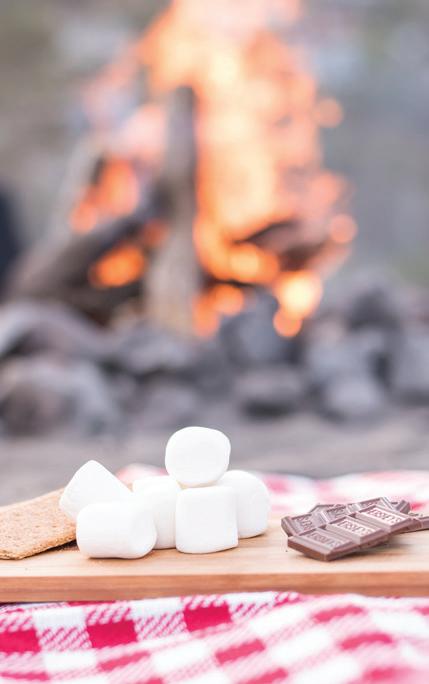
Photographs courtesy of Ellie Hungerford, Engineers Without Borders
Members of Auburn University’s chapter of Engineers Without Borders, including Helena’s Mac Shannon, traveled to a village in Guatemala over the summer to provide safe, clean drinking water to a community in need.
This was a common question asked to residents who lived in my south Texas hometown. The answer to that question was, most often, no. We hate any sign of cold weather and very much enjoyed living in a beach town.
It was always an odd-sounding question about whether I miss winter and snow or seeing leaves change colors or the blossoming of spring plants.

It has been 20 years of living in Alabama and progressing through different life stages for me to really appreciate why people enjoy the changing of seasons. The calendar offers us hope that life is going to change, and the optimist in us believes that change will be for the good.

It is going to cool down. It is going to warm up. Football season is almost here. Christmas is close. Summer is coming. There is always something in nature and our environment that helps us to recognize that change is on the horizon and to make plans to act accordingly.
Life is hard—sometimes excruciatingly so—but it is only hard for a season. The sleepless nights with a new baby, the struggle of teenage years, taking care of aging parents—all of these things
happen for a season. Most embarrassments are over and forgotten in about 70 hours. Most of our stressors look different in about two weeks. People may say that they are never going to miss the hard times. We pray for those hard moments to go away. In reality, you are going to miss the hard stages of life. These stages become part of our life’s memories. The seasons and changes are going to bring comfort to our kids, knowing that we persevered through these times, and they can persevere when they experience trials, too. When “they” say don’t blink because it goes by fast, believe it. It does go by fast. Be grateful for those who have been a part of just one of your seasons. Be grateful for those who have been there for all of your seasons. Cherish those you know whose seasons are running out. Enjoy your fall and your pumpkin lattes. Christmas will be here before you know it. Allergy season will arrive before you find the right place to hang your winter coats. You will be joining the millions of other beachgoers on the Alabama Gulf Coast, and then we will be right back here next year.
Next time I talk to a south Texan and they say we don’t need any seasons, I will be sure to let them know seasons are needed. Enjoy them while you can.
“Don’t you miss not having different seasons and all that comes with the changing of the seasons?”Ward Williams is the founder and executive director of Vineyard Family Services. Contact him at ward@vfsdads.com. Ward Williams PHOTOGRAPH BY ALISA ANTON ON UNSPLASH

If you’re close to or have met your annual insurance deductible, your out-ofpocket costs could be significantly reduced. Now could be the ideal time to schedule any appointments or procedures you’ve been putting off. Why wait to start feeling better? Make an appointment today.
Appointments tend to fill up quickly as the year closes. We opened additional time through December so you can book early.

My youngest son is allergic to peanuts. I don’t know how, because I think I ate my weight in Uncrustables and Nutty Buddies when I was pregnant.
When you tell someone your child has an allergy, whether it’s a daycare teacher, a babysitter, or a family member, there’s this subtle shift— subconscious or not—of how they view caring for your child. It carries a potential risk.
Do I have peanuts around? What food is being prepared? Do I know how to work an EpiPen? What exactly determines “needing to use an EpiPen?” Who do I call? What do I do?
I’m a nurse, but a full-blown allergic reaction would still have me sweating bullets and in a panic. I assume it’s even scarier for most folks. So, when I found out that my son was allergic to peanuts at nine months old, I was devastated.
Not only would others worry when I left him in their care, but I would also worry constantly. Just give me a potential problem and I will worry it to death. And then worry it some more.
But, most importantly, he would always worry.
He would always need to carry an EpiPen—instead of being carefree at a sleepover, he would have to know exactly where his bag would be. He would never enjoy a PB&J or a Reese’s Cup. Halloween, Christmas, Valentine’s…all the holiday candy would need attention.
It made me cry.
So, I immediately scheduled an appointment with an allergist, who then also made me cry.
I was told he would likely deal with this until age 5 and we would then slowly introduce “oral immunotherapy” at the tune of $200/month for the foreseeable future.
Oral Immunotherapy.
No wonder folks don’t get allergy treatment. That term alone is enough for some to say, “Oh no we won’t!” How about, “Give-a-teeny-bit-o-peanuts-and-get-used-to-it therapy?”
So, I found another doctor. And I’m here to tell you that not all doctors are created equal.
Just because one doctor tells you something doesn’t always mean that is the only answer. That might just be a bad answer.
Because my child has now been eating PB&Js and Reese’s Cups since he was 18 months old. We don’t worry about allergies when he stays with a sitter. We eat wherever we want, and I never ask about ingredients.
Oral immunotherapy (OIT) is just a fancy word for slowly introducing the allergen and making your body less reactive to it. We had to come to the doctor’s office every week for a few months. It was time consuming, and a hassle with a toddler. Plus, I had to pay a co-pay every week, which was painful.
But, it was worth it. We were told yesterday that we didn’t need an EpiPen anymore. I’m sharing this to encourage anyone who just found out that their kid has allergies. The sooner they are treated, the easier it is. Or, if your kid is older and you think that nothing can be done, get a second opinion.
I am obviously not an allergy doctor, and you know your child best. And, in the grand scheme of things, an allergy in an otherwise healthy child still leaves you with a healthy child. I always know that things could be worse. But if your kiddo has allergies, go see Dr. Joe LaRussa. His office is fun for kiddos and he will have your crew eating Reese’s Cups in no time! We love Dr. LaRussa!
Alana Smith is a boy mom (ages 7 and 2), nurse anesthetist, and writer in Birmingham. She shares her writing at Holy Moly Motherhood (on Facebook and Instagram), where she tackles all things motherhood and marriage.



Now that school is in full swing, get the kids’ (and adults’) hobby habits under control.
BY TARA BREMERBack to school has craft stuff on my mind! My craft of choice is usually sewing, specifically quilting. I don’t think it’s fair or helpful to give organizing advice without also addressing a mindset or the psychology behind our beliefs and behavior. I have been in many homes where it’s clear the client is trying to stay organized by buying organizing products, but until the beliefs and habits are talked about and accounted for, she will only get so far. There’s really not “one right way” to organize crafts—in fact, there’s infinite ways to organize—but below are a few questions that you can ask to help you know how to organize crafts in a way that works for you, your circumstances, and your people. In parentheses are examples from my life to give you an idea of what I am getting at.
Do I like this craft? (I personally hate kids’ paint—or maybe all paint—because it’s messy. The day I realized this is the day I threw all the paint out and never brought it back into my house.)
Will I realistically work on it/ finish it? (I attempted metal stamping at one point in my crafting life and realized it wasn’t for me. The supplies needed to go.)
Do I want my kids to have access to this craft? (Crafts with the most expensive damage potential need to go up high, only to be taken out when a responsible person is in charge—paint, glue, slime, sharp tools!)
Where am I storing crafts? (I have a room dedicated to crafts and tinkering, but maybe you use a desk, a cabinet, or a closet. This
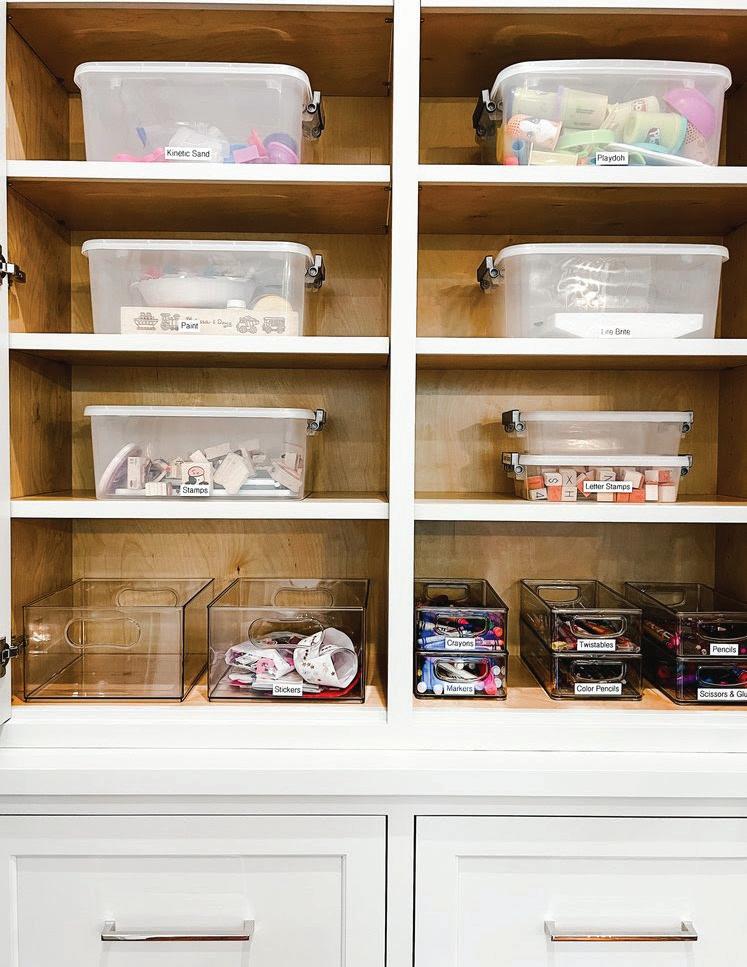
will dictate how much you’re comfortably able to keep.)
Do I need to be able to stack containers so I can make the most of the vertical space? (In my case, yes, I need to be able to stack, so I like to use lidded bins and mini stacking drawers.)
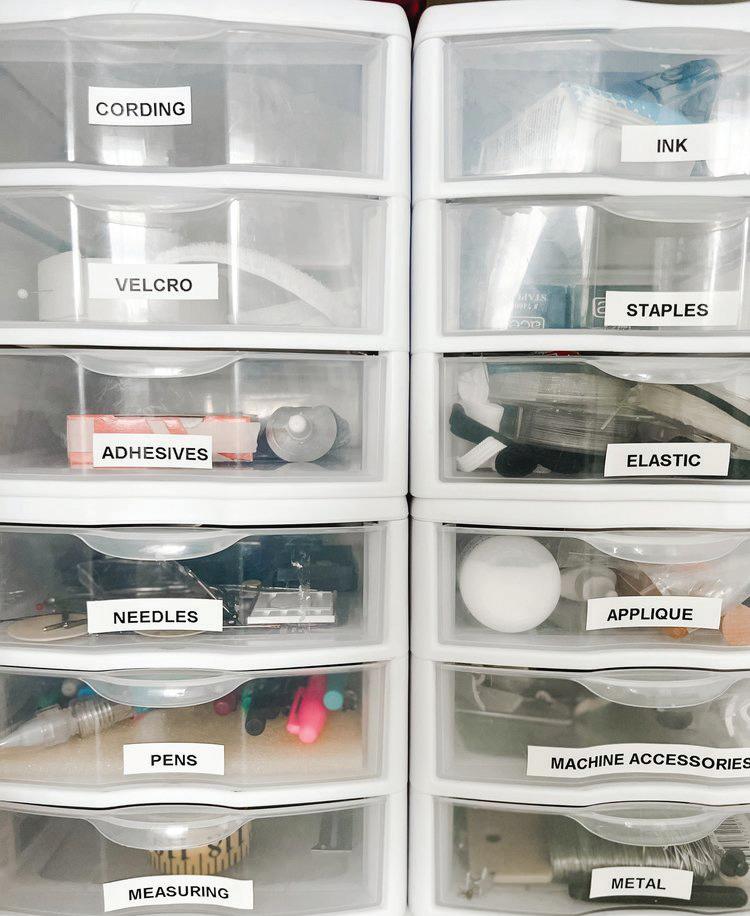
Every fall, I pull out my sewing machine when I volunteer to alter local high school marching band uniforms. And every fall, I must look up how to fold fabric for a blind hem on pants! It’s the only time I ever do any tailoring. Most of my adult life, my sewing has been small projects like clothes for my kids or big projects like quilts. Because sewing is important to me, I have always had a sewing room at home. I keep all the notions I would need for my usual sewing, plus a small stash of fabrics that I use a lot, like leather scraps, burlap, neutral twill, or linen. I don’t keep a large inventory of fabric because I don’t have the space, and I don’t buy fabric without a specific project in mind. To me, that’s just money on the shelf and it may sit there for years! More experienced quilters/seamstresses may keep a large stash, so they are ready to sew when the inspiration strikes, but I have found that much of that fabric goes unused and, in fact, is a barrier to keeping an organized sewing room.
The main reason that sewing rooms can be disorganized has nothing to do with the size of the fabric stash and has everything to do with one little belief: “I might need this one day.” The problem is this belief isn’t wrong. If you have been sewing for years, you know that a 5-inchlong piece of elastic will be useful for something in the future. So, you keep it. And then you see a partially used pack of topstitching needles. You recently bought them for a project, and though you doubt you’ll do a project like that again, you don’t want to throw something away that you just bought, so you keep them. And on it goes with all things sewing, until the storage spaces are overflowing, and you can’t find what you need anyhow!
The first key to sewing room (or closet, or cabinet, or drawer) organization is knowing what kind of seamstress you are. My sewing identity is mostly quilting, and this means that the bulk of my supplies are related to that one lane. I do sew other things sometimes, but those things need to be a lesser percentage of what I store. Which means getting rid of sewing stuff sometimes. Yes, even supplies that are “perfectly good!” Because
what good will they do in a drawer waiting for “one day” versus being used by someone else now? This means giving away: to a friend who will use it, donating to the thrift store or a home ec teacher, or even using those supplies to give a sewing lesson to a group of scouts or a homeschool group.
The second key to sewing room organization is a mindset shift. Our mindset needs to change from “I might need this someday,” to “I can’t wait to bless someone else with my extras!” Certainly, we can use this mindset shift in all areas of our homes, but I believe it’s especially important for seamstresses, quilters, and maybe even all crafters in general to go through this shift, because we are so very thrifty, resourceful, and creative, that even the most random of supplies could, in theory, be used for the next great creation. But when we apply that to the totality of our stash, we become buried.
So, know what kind of crafter or seamstress you are, shift your mindset, assess your storage space, sort out what you can give away, and then get to work organizing. And do not forget to label it all! May you find as much joy in the organizing as you do in the creating. (Visit the House Peace Amazon storefront to see some favorite sewing and crafts organizing tools.)
Tara Bremer is the owner of House Peace. You can find out more or book an online or in-person consult at housepeace.net.
Hit the streets of downtown and go Greek at the 49th Annual Greek Food Festival, happening October 13-15 (Friday-Sunday) from 10:30 a.m.-9:30 p.m. Birmingham’s oldest cultural event offers tons of delicious Greek food, plus dance performances, Greek music from DJ Disco Hristo, and a bakaae sale. The festival is a gift from Birmingham’s longstanding Greek community to the city, with the homemade food and desserts prepared by the city’s parishioners.

The Holy Trinity-Holy Cross Greek Orthodox parish, chartered in 1906, is the fourth-oldest Greek Orthodox parish in the southeast. The Byzantine Basilica
will be open for self-guided tours during the festival, with parishioners available to answer questions between 10:30 a.m. and 9 p.m.
Says Fr. Gregory Edwards on the festival website: “The Greek (or Hellenic) Community of Birmingham is proud to share its Greek culture, heritage, faith tradition, and cuisine with you. Each year we offer this celebration to approximately 30,000 visitors, so that together we in Birmingham can experience a heritage that is not only historically important, but also a culture that celebrates life. Greece, of
course, has a rich pre-Christian history that includes the great epics of Homer and the philosophy of Plato, Socrates, and Aristotle. This was the birthplace of Christianity in Europe, when Paul planted some of the earliest Christian communities in Thessalonica and Corinth, which have existed uninterrupted for the last 2000 years. All of this history and heritage is given form—takes on “flesh and bones”—in the rich sights, sounds, and taste of this culture that you will experience in your visit today. Of course, Greek or Hellenistic culture has never been reserved only for people of a certain DNA. Beginning especially with Alexander the Great in the 4th century BC, Hellenism was the ecumenical or universal culture for most of the known Western world, spreading as far as India in the east. The same is true today. Our community and church is home to Greeks and people from all nations. Everyone is welcome to join us!”
The usual crowd favorites return, with souvlakia, Greek chicken, spanakopita, dolmathes, veggie plates, Greek salad, gyros, pastichio (also available by the

pan), and more. The deluxe plate gives you a taste of it all, with Greek-style chicken, pastichio, rice, spanakopita, Greek salad, and a roll. Be prepared to wait in line for the homemade Greek pastries— well worth it!—with offerings such as baklava, chocolate baklava, almond crescents, kourambethes, melomakarana, and koulourakia. Grab a table with friends or strangers, and enjoy Greek music and dancing while you eat. The open-air event is free admission, with tented seating and food for purchase. The marketplace features a selection of Mediterranean and Orthodox Christian souvenirs. (You can find free parking in the former Liberty National parking building one block away on 20th Street/Richard Arrington Blvd. between 3rd and 4th Avenues. The food drive-thru is available each day 10:30 a.m.-8 p.m. (No need to call ahead.)
Since 1972, the Greek Food Festival has donated a portion of proceeds to local and national charities. This year, those include Children’s of Alabama and The Ronald McDonald House Charities of Alabama.
For more, visit birminghamgreekfestival.net.
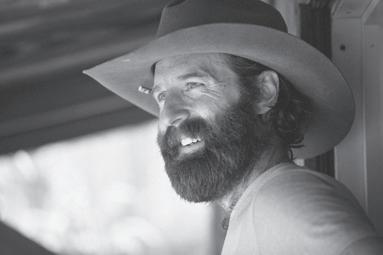
I hit town after lunchtime. I drive around the square. I pass the Ritz Theater marquee. The trading post. Tina’s Homecookin’ Restaurant.
I am looking for Court Street because I am taking a sewing class today. My appointment is at Miss April’s Fashion Girl Sewing Workshop.
I’ve always wanted to learn to sew. When I was a kid, my mother sewed everything. She made our clothes. She even added custom tags to my clothing. The tags read: “Property of Sean Dietrich.”
Mama even started sewing these tags into my underwear. Heaven knows why. I don’t want to meet the man desperate enough to steal another man’s underpants.
Miss April greeted me at the door. Her workshop was outfitted with Singer sewing machines and spools of colored thread. Fun music was playing. The whole place had an energetic, youthful vibe.
“This is a kid hangout,” Miss April says. “Girls come here after school, and I teach them to sew.”
Miss April has been teaching kids to sew for a long time. Sometimes locals buy their daughters and granddaughters lessons for Christmas. Sometimes underprivileged girls just need something to do with their hands, and anonymous donors make it happen.
The reason Miss April teaches sewing is simple, she explains: “Because nobody knows how to sew anymore.”
Sewing is a disappearing craft in America. In fact,
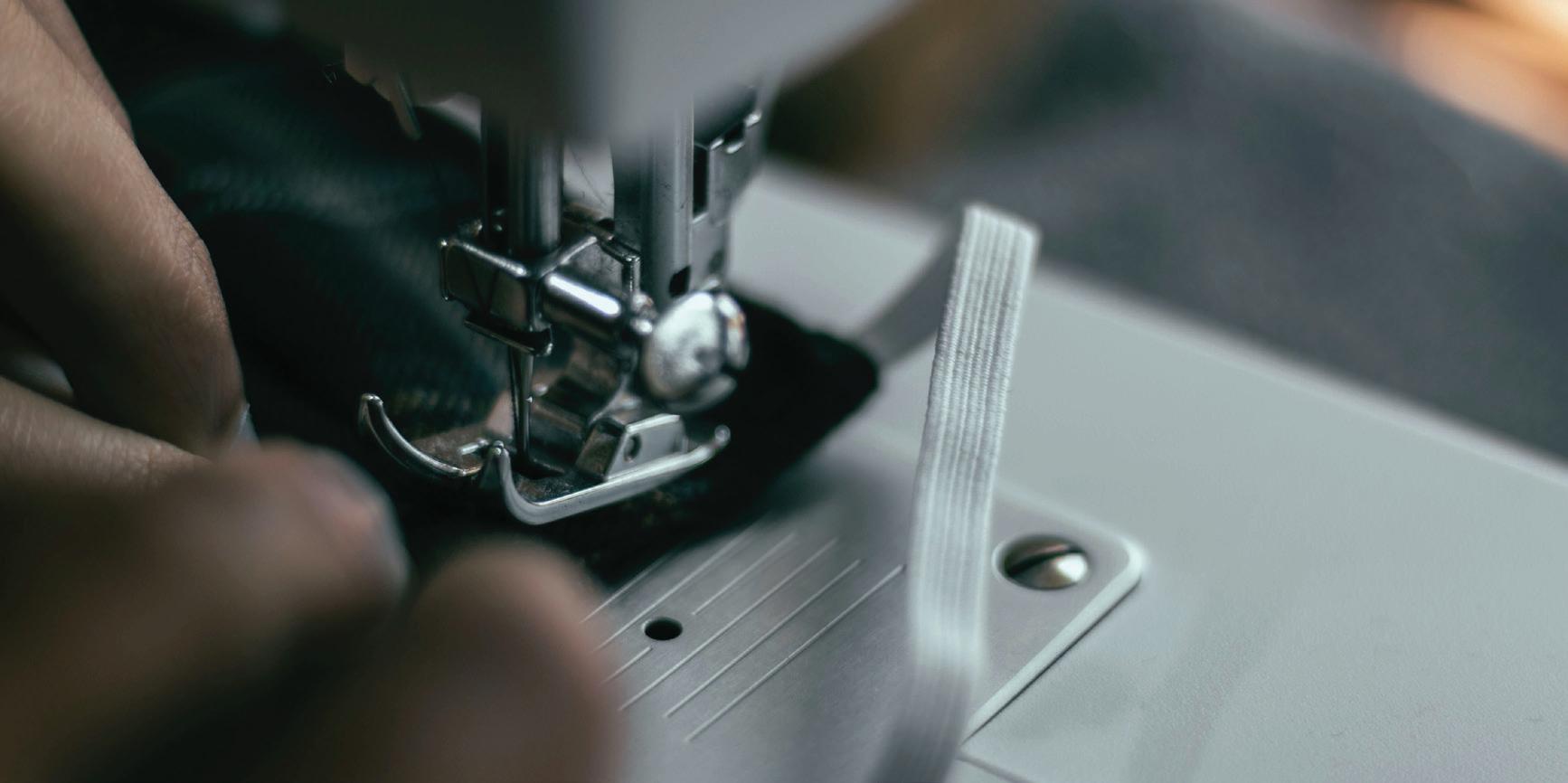
the skill is practically nonexistent.
Fifty years ago, approximately 90 percent of U.S. women practiced the skill of sewing. Today, it’s around 12 percent.
And the stats get even more dismal. One survey showed that 87 percent of U.S. households own irons, but only 9 percent use them. Another survey showed that one in three Americans can’t do basic household skills such as ironing, sewing buttons, reading laundry tag symbols, or boiling water.
Yes. Boiling water.
So why are these skills disappearing in America? Miss April knows why.
“Because a lot of schools don’t have home ec classes anymore.”
She’s got a point. With the rising costs of education, schools now divert funds into programs aimed to help kids get accepted into college. That’s the main goal in today’s schools. College.
Also, classroom time is a factor. Each year, students are expected to complete mandatory state and other required testing. Tests take major time. Precious school hours are spent studying for shiploads of tests.
Nobody has time to learn how to iron shirts.
It was a different world when I was a boy. We had home ec classes beginning in fourth grade.
We learned to boil eggs, darn socks, how to
use weights and measures, how to iron, and, most importantly, how to start a grease fire on Adam Cooper’s classroom stove, and how to call the EMTs.

“I realize not many entrepreneurs open sewing schools for kids,” says Miss April. “But I really believe in what we’re doing. I just want to teach kids to sew.”
Class is about to begin.
Miss April’s students arrive one by one. Soon, the room is alive with the giggling of little girls. Kids are operating sewing machines, making their own clothes.
One girl is making a blouse. Another mends her granny’s shorts. I’ve never seen kids having this much fun doing something that’s legal.
Kayden, 11, sits at a sewing machine beside me. Her hair is in braided locks. She is a quiet kid. Very reserved. I’m not sure whether she likes me.
“What are you making?” I ask.
“A peasant blouse,” she says, stoically.
“Can I watch?”
She shrugs. “Would you like me to explain what I’m doing?”
“Please.”
“Okay,” she says, totally deadpan. “But you have to watch me very closely.”
“Scout’s honor.”
I watch Kayden’s skilled hands. She explains every stitch, talking me through each step.
She is a good teacher. I learn all about straight stitches, chain stitches, back tacks, zig-zag stitches, and how to cut fabric.
Kayden even helps me sew a pillow of my own. She is a patient instructor. But firm. Like an Army drill sergeant, only much shorter.
She shows no emotion except to stifle a laugh when I almost puncture my thumbnail with a highpowered sewing machine needle.
When we are finished, the whole class is ecstatic over their completed projects. And so am I. There is lots of giggling going on. Lots of selfies. Lots of cheering.
Kayden takes my decorative pillow and inspects it with the careful eye of an old master. I am still not sure whether this girl likes me. Frankly, she seems unimpressed by my craftsmanship.
But she finally nods and says flatly, “You did a good job.”
Before we all part ways, Miss April tells us to pose for a group photo. The class gathers together. Several girls, and one tall, goofy old guy. Seamstresses in training.
As we all smile for the camera, Kayden turns to me and whispers, “Are you coming back next week?” And my cup runneth over.
You’re doing God’s work, Miss April.



 BY STEPHANIE LEPORE GIPSON
BY STEPHANIE LEPORE GIPSON
Mac Shannon started his senior year at Auburn a little early. His classroom: the village of Saloj in Guatemala. The Industrial Engineering major, a Helena native, has been involved with Engineers Without Borders since the second semester of his freshman year, and spending part of his summer in Central America was a natural progression. “We wanted to visit a community where we could really make an impact and change lives for the better,” says Mac. “It has honestly been so fun and really amazing helping other people in a different part of the world.”
For two weeks in August, 11 students and two advisors—the largest team in the chapter’s history—worked in this small village in a country
where more than half the population is below the national poverty line. Residents of Saloj spend nearly 20 percent of their weekly income on sanitary drinking water. Due to the cost, many families forgo clean water in order to save money.
The plan for the trip included supplying 250 people—40 families—with safe water for much less than the previous supplier. To do this, the students implemented a gravity-fed pipeline that transports water from a natural spring to the community. “We tapped a spring about 3 kilometers away, connecting a 1-inch pipeline to the spring and running it about
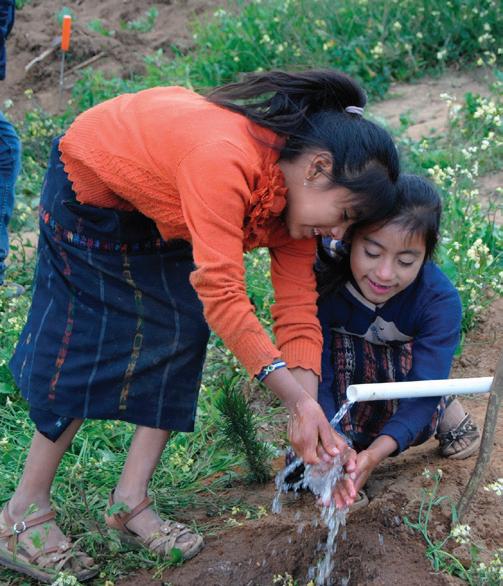
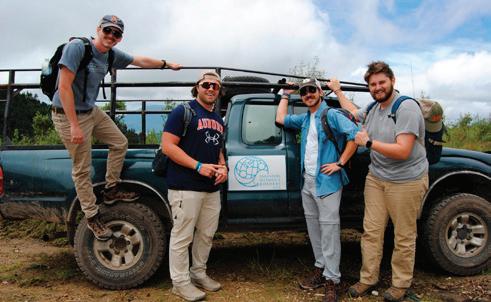
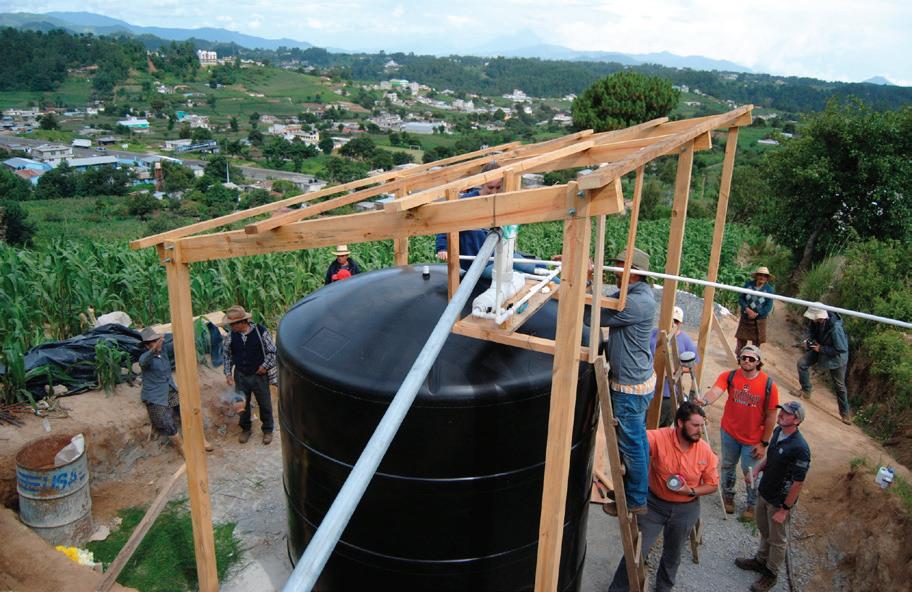

2.5 kilometers to a tank right by the community,” says Mac. “It took a lot of work and walking, as we had to glue hundreds of PVC pipes together from the water source to the tank. We worked hand-inhand with members of the community to complete it.”
The pipeline extended down a mountain along various elevation drops, through a steep valley, and on major roads and aerial crossings. The group, which included fellow Helena native and Mac’s childhood friend Brennan Paucke, buried the PVC pipe in a half-meter-deep trench the entire span.

 Bham Family October
Bham Family October
The team also built a chlorinator, which purifies the water before it goes into the tank. From there, Mac explains, community members laid the last of the pipeline to each house, so that water is available to everyone.
“The most rewarding part of this trip was getting the water to the tank,” says Mac. “The villagers felt so blessed and happy to have water that much closer. I have never had emotions like I did that day! Just seeing the looks on their faces really drove home that everyone around the world doesn’t have the luxuries
we do in the United States. But Engineers Without Borders is doing everything we can to change that!”


Though Mac will graduate in the spring, he intends to make at least one more sojourn to Central America. “It was incredible going to Guatemala and experiencing their culture. It’s beautiful there,” he says. “We are currently looking at another project for next summer, with plans to give another community access to safe, clean drinking water. I love problemsolving, and I hope to return to help change another community’s world.”

Read more about Auburn’s Engineers Without Borders chapter at wp.auburn.edu/ewb.





Firepits are a super-easy and costeffective way to create an outdoor living space for your family to enjoy. This is also one of our favorite simple and easy ways to welcome fall. Using an old syrup kettle makes quick work of getting your outdoor space ready for s’mores and fireside snuggles!
I have clients who are so looking forward to roasting marshmallows with their grandchildren this fall. We placed a stone terrace on the back of their house facing the incredible lake views. For terraces, we like to use large 2 ½-inch slabs of stone with a polymeric sand base. Mortar joints end up cracking in the long run, but this will last a lifetime. We knew when building the terrace that we would be adding a firepit for them
to enjoy! A tip for outdoor spaces: When you’re building, always try to think long-term and— more importantly—how the space will function. Instead of building a firepit out of stone, consider using an old syrup kettle! This is a super quick, no-hassle way to get a toasty glow and, fingers crossed, bonfire weather is headed our way soon! If you’ve never heard of these before, let me explain: Syrup kettles are large shallow metal bowls that were once used for cooking down sugarcane syrup! I recommend investing in an old one. They can be on the pricey side, but they are very well worth the money and they allow you to have an outdoor firepit in no time! They can also be used for container gardens, koi ponds, and so many other neat things.
• Do not go cheap on a firepit. Often, people look at the space and don’t realize what size they need. We measure and re-measure to

ensure our size is correct. Take the time to draw out the space where the firepit will sit, take a few steps back, and look at the space drawn out compared to the house or the surroundings. Don’t be afraid to make changes.
• Make the first cut. Because we placed our firepit on an existing stone terrace, we removed the extra stone by cutting it out in the shape we measured. We wanted the firepit to sit on a bed of crushed slate to prevent any staining of the beautiful terrace.
• Let’s start digging. To prevent the firepit from becoming a birdbath, we drilled a hole in the center of the kettle.
• Create a drainage system. Next, we needed a place for the rain to go, so we removed a dirt area 3 feet wide by 4 feet deep. We placed gravel in the bottom of this hole and then placed a 5-gallon bucket in the ground on top of the gravel and surrounded the
bucket with gravel. Basically, we filled this entire hole with gravel. Before placing the bucket in the ground, cut slits in the bucket so that, as it fills up with rainwater, it will slowly release into the ground.
• Topdress the firepit. Spread the entire surface area with chipped slate, and place the stand inside. As the chipped slate ages, it may need to be refreshed around every five years.


• Place the syrup kettle on top of the stand, and you are set! Add some beautiful chairs and side tables, grab your s’mores supplies, and you are ready for crisp fall weather and fireside fireside family time!
And edit this to: For more outdoor entertaining and gardening ideas, follow @bespokegardenplans and @carmenjohnstongardens on Instagram.


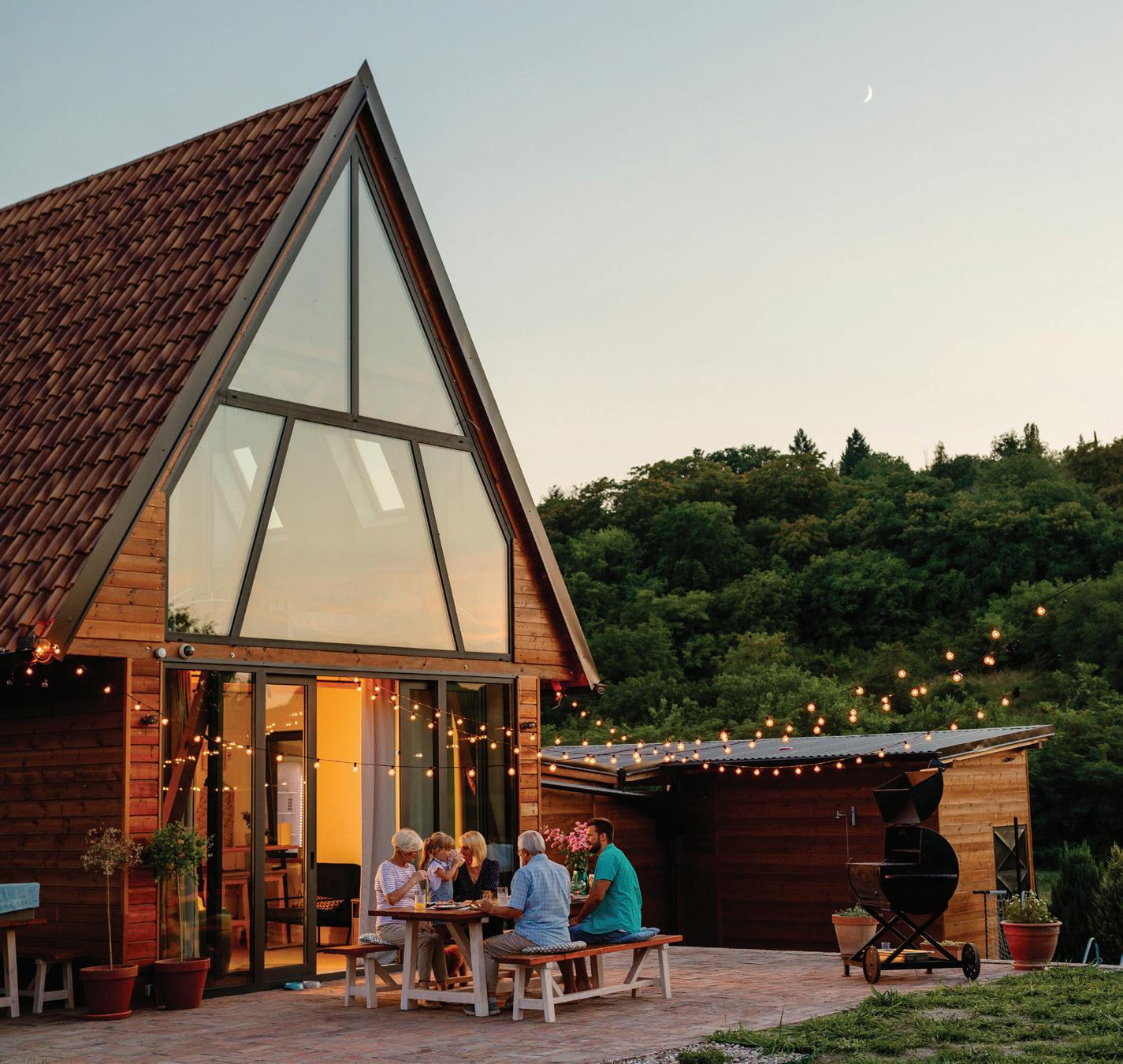




Once you’ve finished the family DIY firepit (p.24), you have to break it in with a night of roasted marshmallows sandwiched on graham crackers with melted chocolate. Who doesn’t love a s’mores night? If you’re up for trying new flavor combinations, invite over some neighbors and friends, and try a couple of these inventive spins on the classic treat.
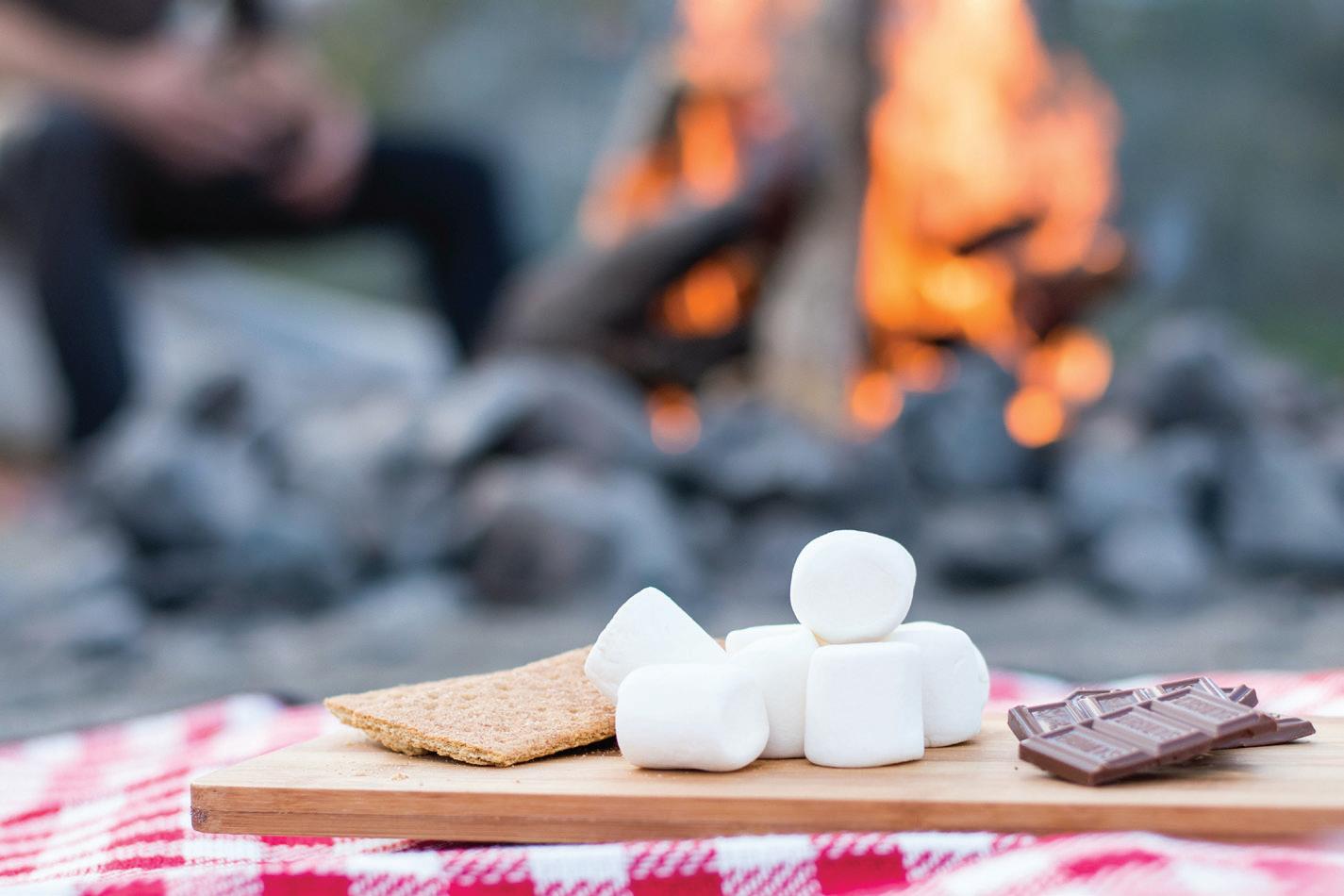
We all know the typical combo: two graham crackers + one slightly charred marshmallow + a few squares of Hershey chocolate. But how about:
• Cookie Butter S’mores: Graham crackers + Trader Joe’s Speculoos Cookie Butter + marshmallow
• Waffle Fruit S’mores: Waffle cookies or Stroopwafels + sliced strawberries or maraschino cherries + marshmallow
• Caramel S’mores: Graham crackers + caramel sauce or caramel candy + marshmallow + coconut (optional)
• PB&B S’mores: Graham crackers + peanut butter + banana slices + marshmallow
• Salty-Sweet S’mores: Graham crackers + chocolate squares + potato chips +
marshmallow
• Pretzel S’mores: Graham crackers + chocolate- or white chocolate-covered pretzles + marshmallow
• You can also substitute Oreos, chocolatechip cookies, Ritz crackers, and even Rice Krispies Treats for graham crackers. Instead of plain chocolate, try Reese’s Cups, KitKats, York Peppermint Patties, or even Snickers!
The Birmingham area plays hosts to all kinds of pumpkin patches, festivals, hayrides, corn mazes, and much more. Here are a few of our faves!
Haunt the Hills Saturday, October 22 Wald Park, Vestavia Trick-or-treating from 4-6 p.m., costume contests, and a Halloween movie at dusk vestaviahills.org
4D Farm Thursdays-Sundays in October 7182 County Rd. 703, Cullman Tubing slide, gem mining, cow train, corn maze, pumpkin patch, and more 4dfamilyfarm.com
Bennett Farms Wednesdays, Fridays-Sundays in October 1073 County Rd. 13, Heflin Pumpkin patch, farm animals, hay maze, sunflowers, and live music bennettfarms.com
Grace House Pumpkin Festival
Saturday, October 15 (10 a.m.-1 p.m.)
Central Park, Homewood Carnival games, giveaways, and a pumpkin included with each children’s admission grace-house.org
Griffin Farm of West Blocton
Saturdays-Sundays in October 826 Griffin Rd., West Blocton
Corn maze, hayride, barrel train, zipline, and rock wall griffinfarmal.com
Halloween Fairyland Saturday, October 29
Tannehill State Park, McCalla Campsites with trick-or-treating, moonwalks, face painting, and a train ride tannehillstatepark.org/events
29 Bham Family October 2022
Pumpkin Junction Saturdays-Sundays in October
Heart of Dixie Railroad Museum, Calera
A short train ride through the woods to the patch for pumpkins, a pallet maze, games, and crafts hodrrm.org
The Patch at Helena Hollow Fridays-Sundays in October 6027 Hwy. 17, Helena
More than 30 activities on 10 acres, including a corn barn, 80-foot pipeslide, and Animal Alley helenahollow.com
Sims Garden Daily through October 913 Irving Rd., Homewood Pumpkin and mum sale, scarecrow contest, and arts and crafts cityofhomewood.com/sims-garden
Old Baker Farm
184 Furrow Ln., Harpersville
Wednesdays, Saturdays-Sundays in October
U-pick pumpkins, corn maze, petting farm, and train rides; festival week====end: October 22-23 oldbakerfarm.com
The Great Pumpkin Patch Daily in October
288 Hwy. 45, Hayden Hay rides to the pumpkin patch, inflatables, hay pyramid, pony rides greatpumpkinpatch.com
Mt. Laurel Fall Festival Saturday, October 15 (10 a.m.-3 p.m.) Town of Mt. Laurel Farmers’ market, craft fair, inflatables, and live music mtlaurel.com
The Altamont School senior Savitri Sasse studied Arabic for seven weeks in Jordan this summer after earning a prestigious National Security Language Initiative for Youth (NSLIY) scholarship.

The program, launched in 2006 by the U.S. Department of State’s Bureau of Educational and Cultural Affairs, is part of a multiagency government initiative to increase the number of young Americans with the language skills necessary to advance international dialogue, promote economic prosperity and innovation worldwide, and contribute to national security by building understanding across cultures.
Savitri competed with thousands of applicants from high schools across the United States, and was one of approximately 400 students to earn the honor. “The application and interview processes were rigorous,” says Cameron Gaede, Altamont’s Director of College Counseling, who guided Savitri through the process along with Associate Director of College Counseling Julie Beckwith and French teacher Peter Rosborough. “Savitri worked her way through them systematically, carefully, and with enthusiasm,” Gaede says.
Savitri is an experienced student of French at The Altamont School and studied in France last year. She took up the challenge of learning Arabic, with its very different alphabet and right-to-left orientation, because she wanted to broaden her linguistic and cultural horizons. “I think it was important for me to experience the Middle East, but also to learn Arabic,” she said.
With no experience of Arabic apart from a brief preparation program, Savitri was truly immersed in the language in Jordan. Her host family did not speak English, and the formal education was intense—five days per week at Qasid Institute with 20 other students. Weekend exploration of Jordan included an overnight stay at Wadi Rum. Archeological evidence shows that Wadi Rum Desert has been inhabited since prehistoric times. Its fresh water springs made it an ideal stopover for
traveling caravans etween Arabia and the Levant. Inscriptions show that Bedouin tribes—Ad, Thamud, Lihyan, and Main—were once there. Wadi Rum Desert is famous for its link to T.E. Lawrence, the original Lawrence of Arabia. Along with Prince Feisal bin Al-Hussein, he made his base there during the Arab Revolt (1917-1918). In 1962, David Lean filmed his movie “Lawrence of Arabia” on location at Wadi Rum. Savitri counts her visit to Wadi Rum as one of her favorite experiences of the country.
Many NSLI-Y alumni go on to pursue education and careers vital to U.S. national security, and credit the program experience with helping them improve their academic, leadership and cross-cultural communication skills. For now, Savitri simply hopes to continue studying Arabic and possibly even return to Jordan some day for more advanced study. Starting a new school year at Altamont this fall, she recommended the deeply immersive approach to language in general, and the NSLI-Y program, in particular. “It was one of the greatest experiences I’ve ever had,” she says.
Sydney was diagnosed with osteosarcoma at 13 years old. Through her treatment and recovery, she bonded with the doctors and nurses saying, “they became like family to me.” She was so inspired by her care team, she decided to become a doctor and help other children going through a scary and similar situation. She also wanted to show that people with physical challenges can and should pursue medicine, too. She believes her journey to becoming a doctor was inspired as a patient here at Children’s of Alabama.

TEENS — Have questions? Concerned about things? Just need someone to listen? Talking helps. Whether you are having a great day or a tough day, give us a call. We are here to listen.





PARENTS — Think your teen might be involved with substance abuse? Have questions? Concerned about your teen? Wondering how to handle your teen’s choices? Just need someone to listen to you? Talking helps.

